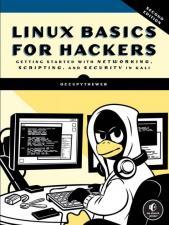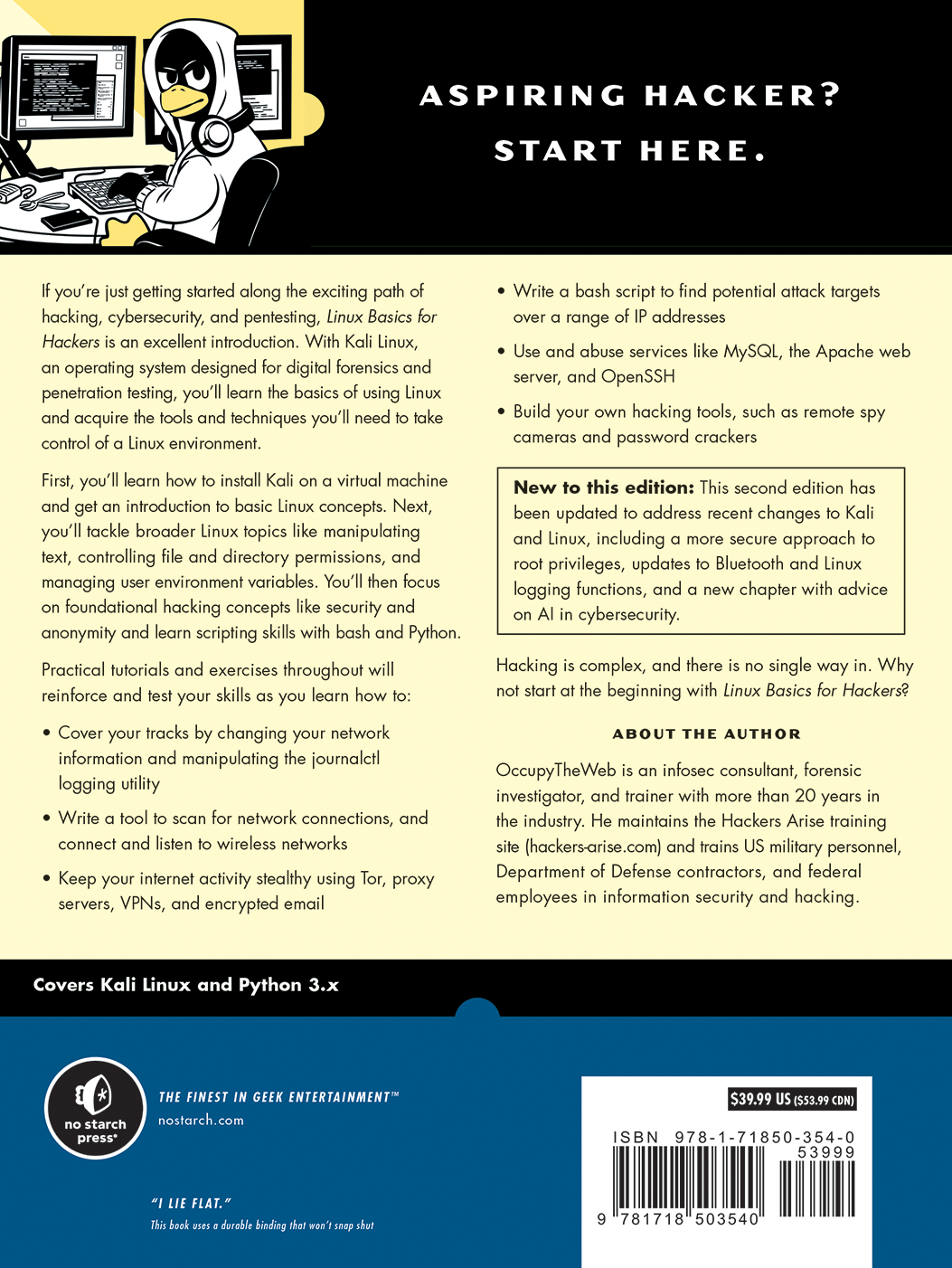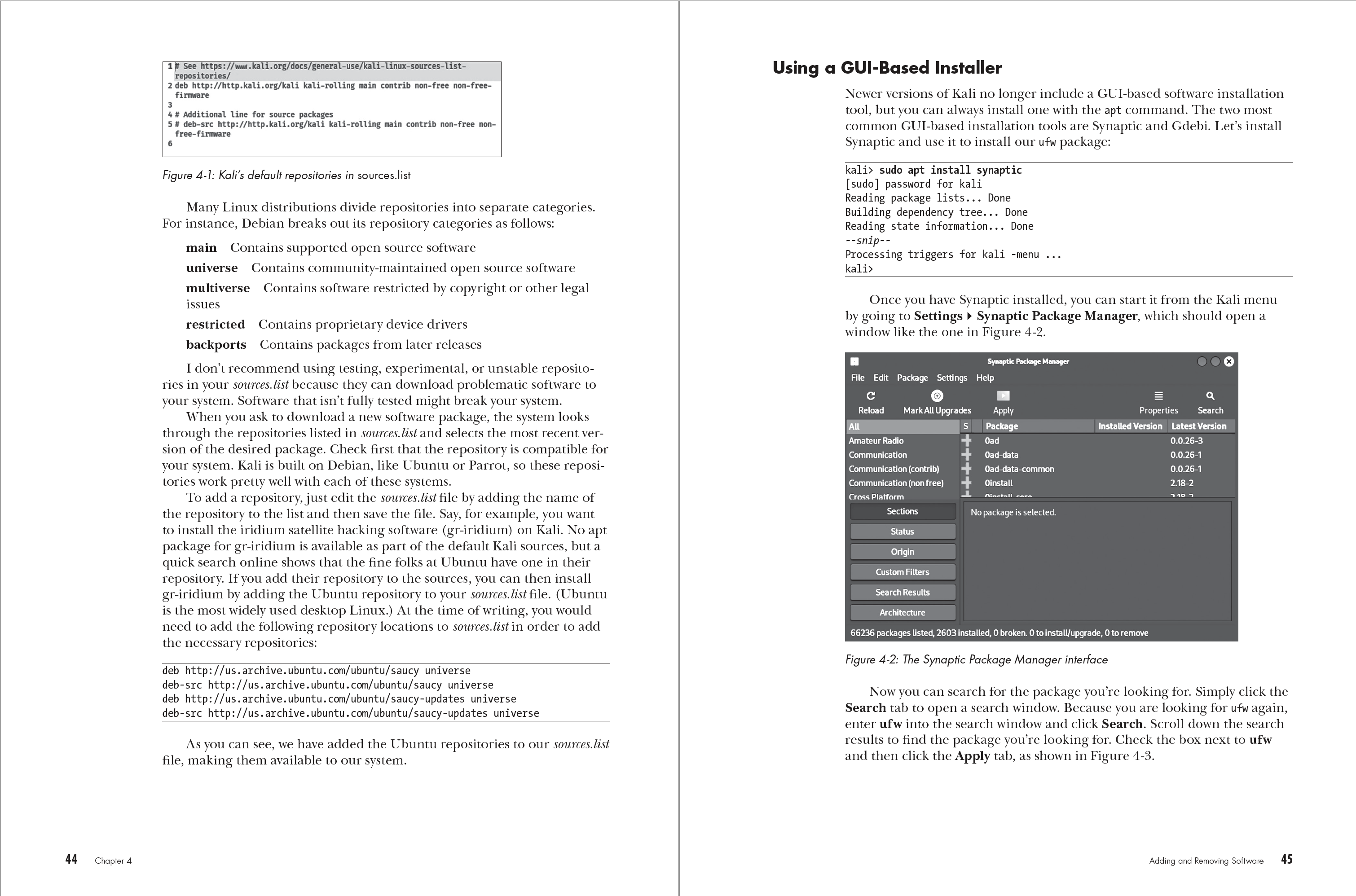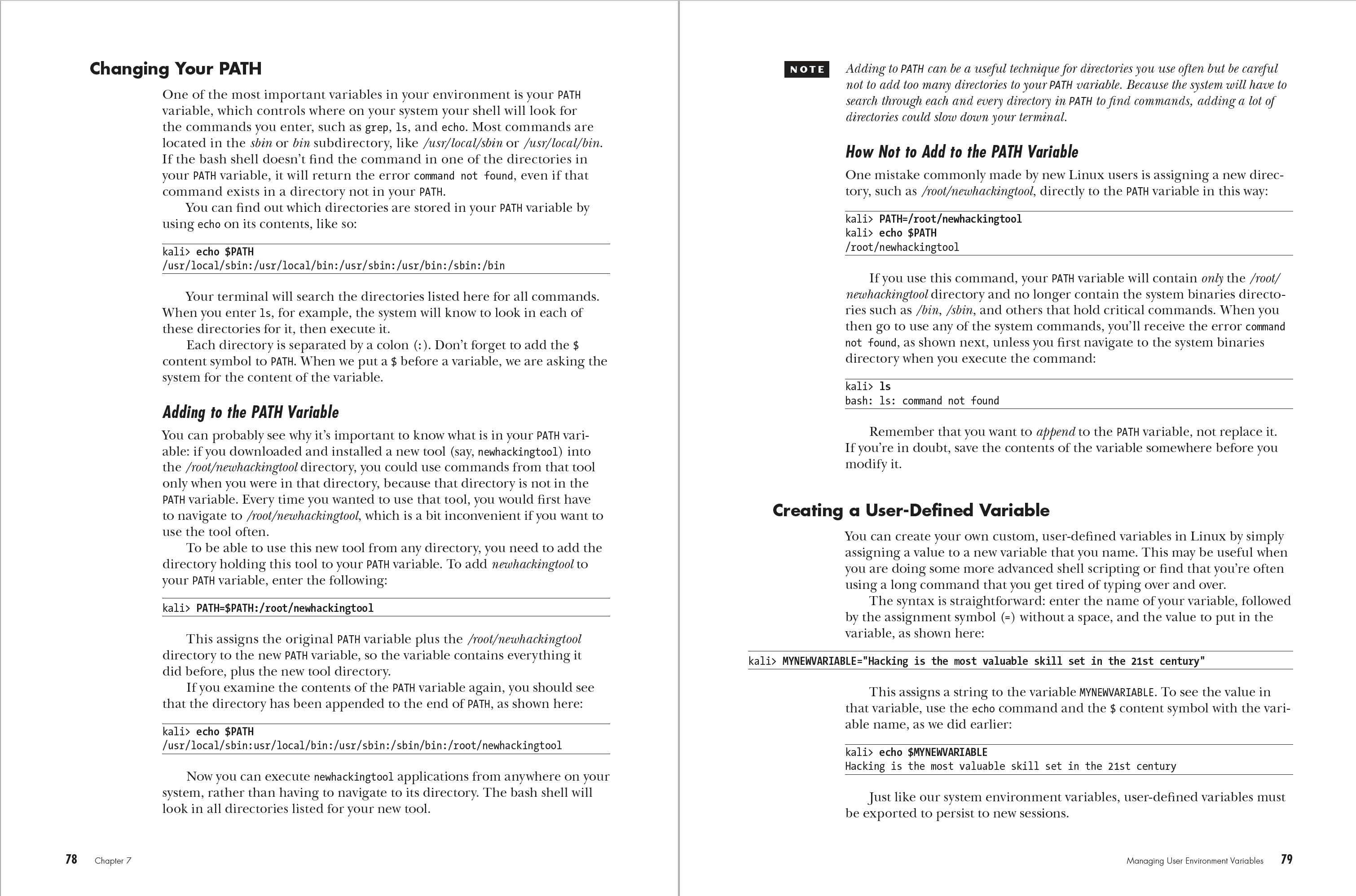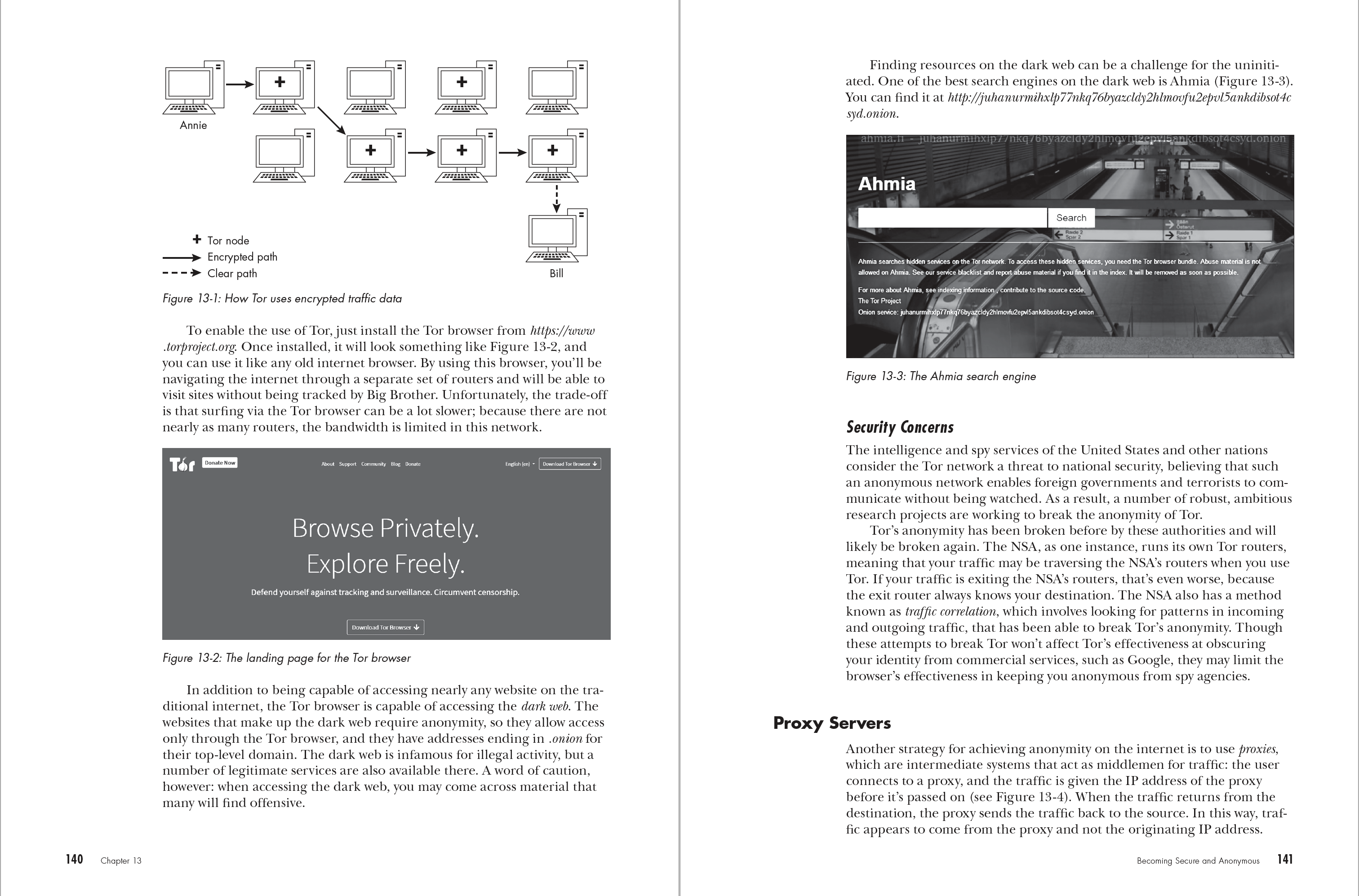Acknowledgments
Preface
Introduction
Chapter 1: Getting Started with the Basics
Chapter 2: Text Manipulation
Chapter 3: Analyzing and Managing Networks
Chapter 4: Adding and Removing Software
Chapter 5: Controlling File and Directory Permissions
Chapter 6: Process Management
Chapter 7: Managing User Environment Variables
Chapter 8: Bash Scripting
Chapter 9: Compressing and Archiving
Chapter 10: Filesystem and Storage Device Management
Chapter 11: The Logging System
Chapter 12: Using and Abusing Services
Chapter 13: Becoming Secure and Anonymous
Chapter 14: Understanding and Inspecting Wireless Networks
Chapter 15: Managing the Linux Kernel and Loadable Kernel Modules
Chapter 16: Automating Tasks with Job Scheduling
Chapter 17: Python Scripting Basics for Hackers
Chapter 18: Artificial Intelligence for Hackers
Index
View the Copyright page
View the detailed Table of Contents
View the Index



